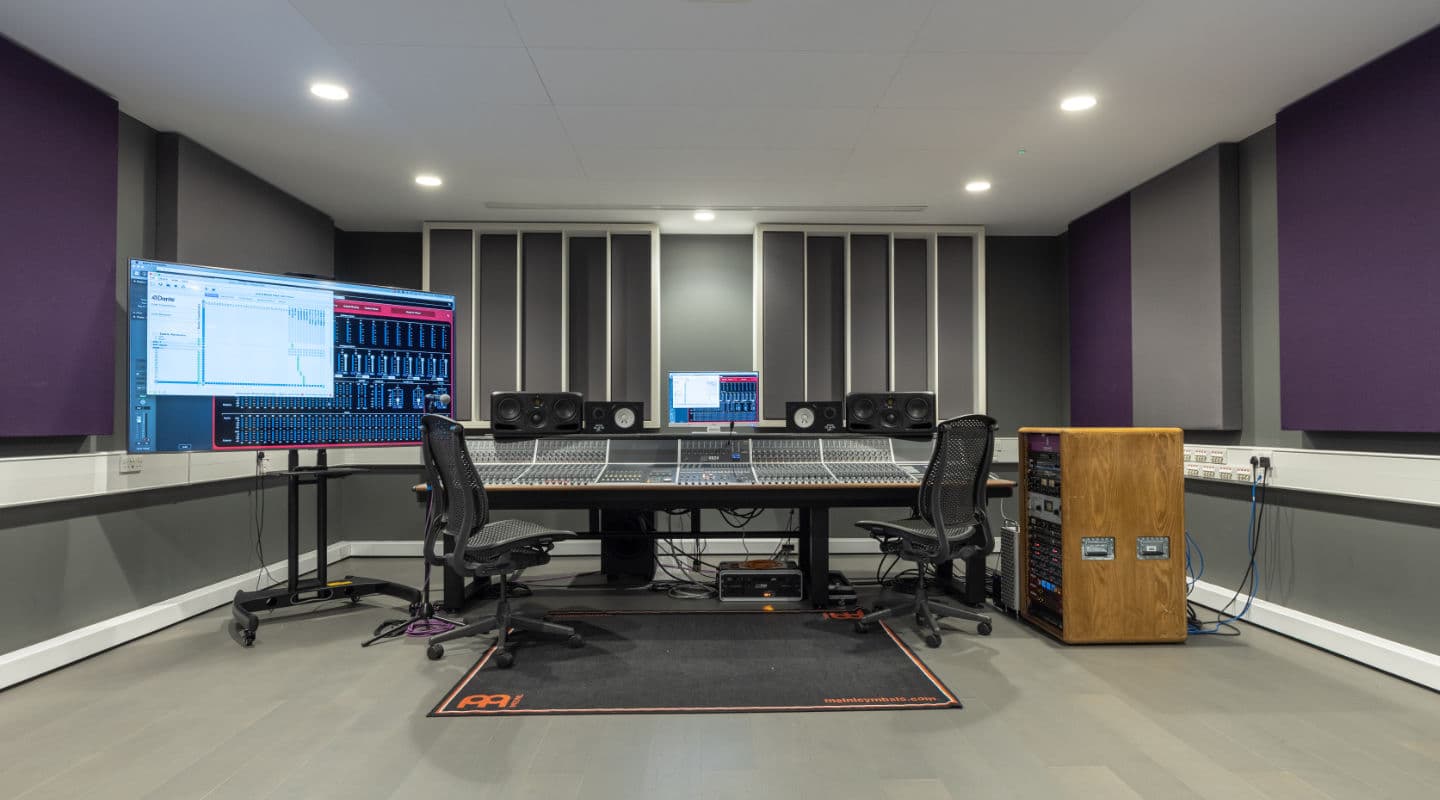
Focusrite Helps Resonance Re-Imagine Pro Audio Education
Brand-new US music institute is packed with Dante, RedNet, and enough consoles to give all students a proper go, hours rather than minutes
Resonance is a music institute in the West Midlands, one that’s unlike any other in the world. Offering three-year Bachelors’ degree programs in everything from music performance and production to sound engineering, the school has been designed around a completely new approach to music and pro audio instruction, that’s optimised to take students farther, faster. Many tech innovations have been put in place to help Resonance carry out its mission, with Focusrite integral to the solution.
A Different Kind Of Audio School
Resonance is centred around very small classes (no more than 200 students per year) in an environment that eschews traditional classroom learning in favour of as much hands-on work as possible. Students get many more opportunities to use their skills every day in music performance, engineering, broadcast, and live audio work.
Resonance CEO and Principal Rick Benton explains: “In a traditional class situation, you might have ten or twelve students around the console, each waiting for their few minutes at the board. What we wanted to do instead was to have ten students in ten rooms, each with their own board and getting the same source material to work with.
“Perhaps in one room a student gets this phenomenal kick sound with perfect EQ and gating. The other students can come into that room and look at the board to see how it was done, then go back to their own rooms and try it live without having to wait their turn. It’s all about a hands-on approach, where students get hours rather than minutes behind the desk to really try things out and play.”
Alex Prince, Course Leader for the Performance and Production Degree course, adds: “When I was at university, we had eight studios, all fully equipped… and in three years, I was in the studio four times. A major part of what makes my job at Resonance really enjoyable is being able to say, ‘The studios are free right now, guys – if we want to learn about compression, let’s go to the studio and do it rather than just talk about it.’ It’s far superior to a rigid lecture schedule.
“The lid has been lifted off what’s possible. If you can put each student in front of their own mixer rather than gather them around one board and have them wait for their chance to use it, then a major block has been removed from providing the hands-on experience that these students require. It’s very freeing.”
One Campus, Many Rooms, One Big Network
Resonance has three recording studios, each with its own control room, live room(s) with traditional analogue connections, equipment, and workflow. In addition, there are eight fully equipped rehearsal studios for live work, six acoustically isolated practice rooms, and a Mac Lab for basic DAW-based study. A variety of small digital mixers and other equipment can circulate between any of these rooms as needed. Alex runs down the details:
“The centrepiece of Studio One, our ‘project studio,’ is a Red 16Line interface connected to two 8-channel ISA 828 MkII preamps with Dante converters in them — that’s 24 analogue inputs, with 16 of them being excellent ISA preamps. There are fader controllers for the DAWs rather than a mixer; after the ISA Pres, everything is ‘in the box.’
“In Studio Two, there is another Red 16Line connected to two A16R MkII analogue I/O, which are in turn connected to our Audient ASP Heritage inline console that’s been modified for 48 discrete buses. If the students want to plug in every input from the two live rooms as well as our rack of vintage audio gear, the board and the interfaces can handle it — I insisted on that mod because when you’re limited to 24 channels, there’s nothing more devastating than needing just two more!
“In that studio, we have two ADAM Audio S3H monitors as our main midfields, with a Sub12 to take care of the low end. Since the control room is specifically designed to hold a full class of 20 to 30 students, the monitoring system must be able to fill that large space.
“Studio Three is still under development, but it is in operation and uses a Focusrite Clarett 8Pre USB. It uses a Novation controller and a Mackie HUI fader bank; the long-term plan is to put in another flavour of console, such as an SSL Origin or Delta. In the meantime, students can grab any of our small Dante-enabled digital desks such as the MIDAS M32 and Yamaha M7, bring them to Studio One or Studio Three, and either use them as fader controllers or run signals through them to take advantage of the onboard compression or other effects.
“The Mac Lab has 16 Macs, each with a Scarlett 2i2 and a Novation Launchkey Mk3 controller, monitored through headphones. The six Practice Rooms are essentially single Mac Lab stations, but with a set of ADAM Audio T7V monitors to allow students to mix in an independent, isolated room with acoustic treatment. We can bring in other equipment to create a ‘recording van’ or a control room.
“The Rehearsal Rooms all have PA systems in them, and they all have a full backline, with drum kits, Marshall amps, Roland keyboards, and so on. We also have a set of Focusrite gear on wheeled racks: four RedNet MP8R remote-controlled 8-channel preamps, which can go into any room individually or together, and six RedNet AM2 headphone/line out boxes that float as well. It’s easy to add channel count with one of the small digital mixers. If a teacher or student comes up to our technician and says, ‘I want this,’ he gets it done – the equipment can and should move when it has to.”
All of these Dante interfaces are connected via the campus’ pervasive networking. Alex explains:
“The entire building, and I mean the entire building, is equipped with Dante. We have five networks in the building — two for the internet, one dedicated to video, and two completely separate Dante networks running side by side, so if one drops, we go to Dante B. There are Ethernet ports in every room, whether it’s the studios, the live rooms, the rehearsal rooms, the library, or even the café. In effect, this is a 48,000 sq ft recording studio. It may not be the biggest in Europe, but it is the biggest I’m aware of on a technical basis.”
This means that any number of rooms can share audio tracks, letting students connect any of the live rooms to control rooms in other studios, or branch out to use the practice rooms, rehearsal rooms, and more.
Rick notes, “If you wanted to do a full string section with a drum kit and vocals, you couldn’t do that in one live room, but you could do it in three live rooms, or in two rehearsal rooms plus a live room. Later on in their progression, students can start thinking bigger, and start to think about the routing of all that.
“From a studio perspective, the sky’s the limit. You’ve literally got a whole building to place people in. If you like the way an acoustic guitar sounds in one of the meeting rooms, so be it!”
Teaching The Importance Of Networking
Going beyond the network’s ability to tie everything together, understanding how it works is a critical part of students’ education. Rick says:
“I wanted the students to learn that when you’re working at a festival site or at a complex venue, your audio from the stage needs to go everywhere, and doesn’t go analogue any more. Having that built into the facility helps students understand at a very early stage that networking and IT structures are becoming a crucial part of live event organisation.
“Our understanding from the industry is that there is a potential shortage of good live sound engineers who have this network background as well — people with phenomenal ears who can mix anything that comes at them, but also have that knowledge of how to send that signal around and how to troubleshoot network issues.”
Alex adds: “For me, that’s where Focusrite bridges this perfectly. You have the Dante network, which is its own protocol, and there are many manufacturers who have it integrated. This network will work with systems or components from any manufacturer for any idea that we might come up with, and yet at its core it’s still the Focusrite brand. It all marries up so perfectly and it doesn’t get in its own way. That, for me, is the key part.”
A Practical Approach To Audio
Resonance is all about results, so students are exposed to equipment from many different manufacturers at many different price points. The interoperability of Dante makes this simple, as Rick points out.
“There’s this belief that what you should put in front of students should be industry-standard equipment. Does every console have to be £80,000 or £100,000 and come from one brand? It’s great to have some of that around, because it’s aspirational — but as we know, you’re just as likely to be mixing Front of House on a small digital desk.
“That’s the nice thing about the way Dante works; we don’t have to stick with one brand, so the students are getting exposed to all sorts of equipment. We can bring in other high-end stuff if we need it … but we’re not putting just one thing in front of them, something they may never see again after they get their degree. They work on equipment that can get the results.”
“We’re trying to get the students into the mindset that you don’t need a £250,000 studio to do live recordings while you’re out as a sound engineer. You use your Front of House board — whatever it is — capture the sound, get it back home, run it through studio monitors, remix it, maybe get the singer to come in and do a few overdubs, and sell it on to the band. Now the band has a live CD that they can go out and sell on the next few gigs, and there you go — you’ve got a studio that’s helping live bands sell their gigs again.”
COVID-19 — The Acid Test
When the COVID pandemic put the country in lockdown, many learning institutions found themselves scrambling to re-invent their teaching style. Resonance, which opened in September 2020, found itself uniquely placed to carry on with its curriculum — all thanks to its massive Dante integration.
As Rick remembers, “This was the worst possible year to launch a university, but in a 48,000 sq ft building, we can give every student their own room. They’re safely isolated, and yet they can be on campus and get their hands on the equipment for the practical approach to their learning. Having the Focusrite RedNet gear has really helped it along.
“One of the wonderful things about Focusrite Dante gear is the ability to get nearly zero milliseconds of delay from room to room. With our collection of MP8s and AM2 headphone amps, we can take audio from one rehearsal room to another, and actually have real-time rehearsals where it sounds and feels like students are in the same room even though they’re isolated.
“On our Open Days, when students visit us, that’s how we showcase the network. We have staff members isolated in different rooms, and we all jam in real time with all audio running into a desk and recorded in Logic. It shows them the scale of the opportunity and the processes that are available to them.”
Partners In Success
Resonance is partly funded by the Midlands Engine Investment Fund for its work in job creation, but it also gets matching funds from other industry sponsorships. Its relationship with the Focusrite group of audio companies runs deep and strong.
Rick notes that Focusrite’s goals run parallel to Resonance’s, and it shows. “What we tell the industry is that we are here to train students, and boxes won’t train them — people will. Our partner companies don’t see education as just another place to sell product. They see that if we’re going to have an industry in ten years’ time, we’ve got to get the people ready to take that industry forward.
“The guys at Focusrite in the UK have been unbelievable. They are at the other end of a phone call, no matter what time of day… they gave us so much advice, they ring constantly just to ask how things are going and do we need any help with anything, can they come down and talk to students? What we’ve got with Focusrite are incredibly knowledgeable, wonderful people who really get what Resonance is about, who want to be involved, who want to come and talk to students, to give them projects to work on and mentor them through the three years of training. That’s what we want.”
Alex: “The most recent time they came down to visit and we were walking around the buildings, we started talking long-term/big-picture. I mentioned Dolby Atmos, and instantly there were light-bulb moments for all of them. ‘Here’s the person you need to talk to. I’ll get in contact with the guys at Dolby and get them to come down and see you. Kevin from ADAM Audio will jump at the opportunity to come in and design an Atmos monitoring system…’ It’s that level of enthusiasm and support that makes Focusrite such an excellent partner.”
Focusrite: pro.focusrite.com
Australian Distributor: innovativemusic.com.au

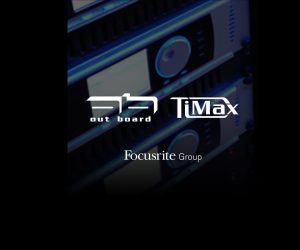
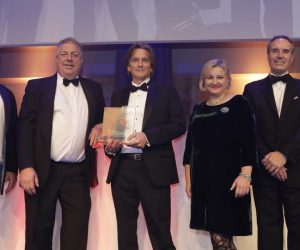
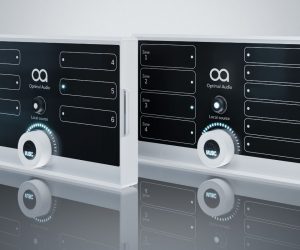
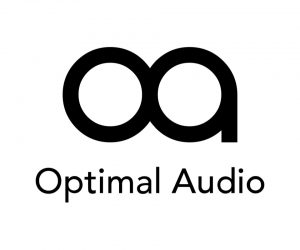
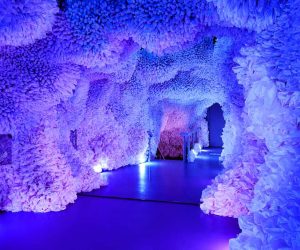
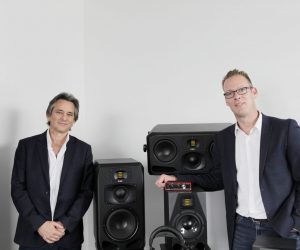
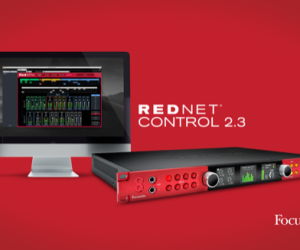
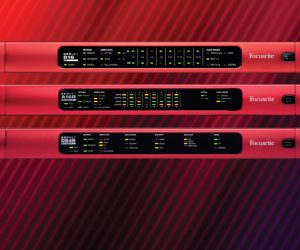
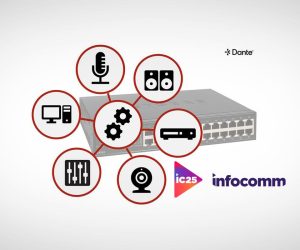
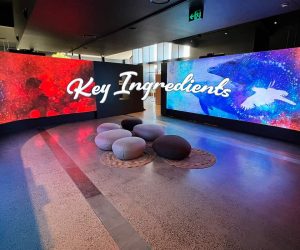
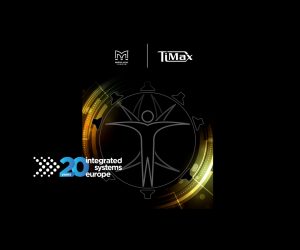
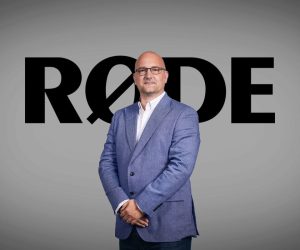


RESPONSES